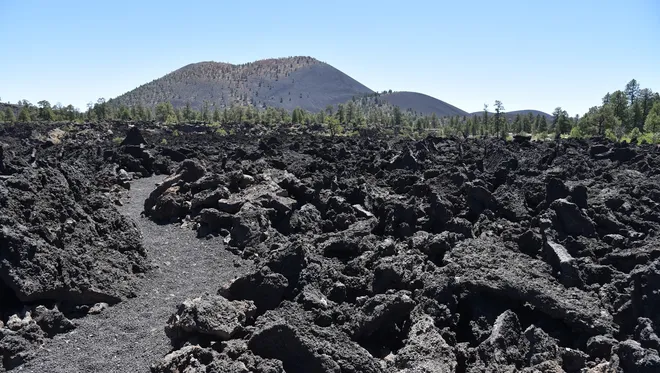Star Gazers Unite!

If you’re a nature lover looking for a unique and exciting adventure, look no further than Sunset Crater National Monument in Arizona. This breathtaking location offers a glimpse into the earth’s ever-changing landscape and provides an incredible opportunity for star gazing.
Sunset Crater National Monument is home to a volcanic cinder cone that was formed over 900 years ago during a series of eruptions. The result is a stunning landscape of jagged black rocks and vibrant red soil that stretches as far as the eye can see. As you explore the area, you’ll be amazed by the sheer power and beauty of the earth’s natural forces.
One of the most exciting aspects of visiting Sunset Crater National Monument is the opportunity to witness the earth’s transformation firsthand. As you hike through the rugged terrain, you’ll see how the land has evolved and adapted to the volcanic activity. From the lush vegetation that has sprung up in the wake of the eruptions to the unique wildlife that calls the area home, there’s no shortage of wonders to behold.
In addition to its geological wonders, Sunset Crater National Monument is also a fantastic spot for star gazing. The clear, dark skies make it the perfect place to observe the twinkling lights of the universe. Whether you’re an amateur astronomer or simply someone who enjoys marveling at the beauty of the night sky, you’ll be captivated by the stunning celestial display.
For nature lovers, Sunset Crater National Monument is a must-visit destination. Its unique geological features and incredible star gazing opportunities make it a truly unforgettable experience. So if you’re looking for a one-of-a-kind adventure, be sure to add Sunset Crater National Monument to your list of must-see natural wonders. Sunset Crater Volcano is a cinder cone volcano located in northern Arizona, near Flagstaff. Here are some key facts about the volcano:
- Sunset Crater is estimated to be around 900 years old, making it a relatively young volcano in geological terms.
- The volcano gets its name from the red and orange colors of the volcanic cinders that cover its slopes, giving it the appearance of a sunset.
- Sunset Crater is part of the San Francisco Volcanic Field, which covers an area of about 1,800 square miles and contains over 600 volcanic vents.
- The eruption of Sunset Crater is believed to have occurred between 1040 and 1100 AD, and it was one of the most recent volcanic events in the continental United States.
- The eruption of Sunset Crater produced a large cinder cone that rises about 1,000 feet above the surrounding landscape.
- The volcano is part of the Sunset Crater National Monument, which was established in 1930 to protect the unique geological features of the area.
- The eruption of Sunset Crater had a significant impact on the surrounding environment, covering over 800 square miles with volcanic ash and cinders.
- The volcano is considered dormant, meaning that it is not currently active but could potentially erupt again in the future.
- Visitors to Sunset Crater National Monument can hike to the summit of the volcano and explore the surrounding lava flows and cinder fields.
- The area around Sunset Crater is also home to a variety of plant and animal species that have adapted to the harsh volcanic landscape.